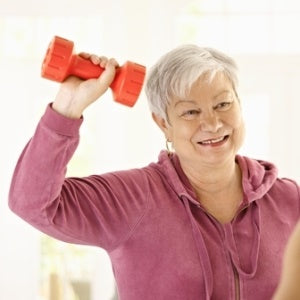To stay healthy, many older folks prioritize exercise and food. However, one of the most serious health threats, improper balance, is frequently overlooked. Liz Moritz, a physical therapist at Harvard-affiliated Brigham and Women's Hospital, says, "I encounter a lot of elderly folks who are indifferent about balance."
Unfortunately, unbalance is a prevalent cause of falls, which send millions of individuals to emergency rooms in the United States every year with fractured hips and brain injuries. However, there are numerous things you may do to enhance your balance. Some of the most effective tactics are listed below.
Rehabilitation treatment
Balance physical therapy focuses on the ability of the joints and brain to interact, as well as the balance system in the ear (the vestibular system) and vision.
"We practice all three with exercises like standing on one foot, first with our eyes open, then with our eyes closed. We also practice joint flexibility exercises, walking, and lower-extremity workouts on one or two legs "Moritz states Chair stands (see "Move of the Month") and squats are two other workouts that improve balance. Before doing these workouts at home, make sure you have received proper training.
Muscle development
"Balance relies heavily on core strength. If your core abdominal muscles are weak, they cannot support your limbs, especially when walking. The gluteal muscles in your buttocks and hips will not be able to move you forward if they are weak "Moritz explains Muscle building can assist. Moritz recommends beginning with gentle core exercises like a pelvic tilt (lay on the floor with your knees bent, then roll your pelvis up) and progressing to more difficult activities like wall planks (stand six inches from a wall, keeping your body rigid, then lean forward with your forearms flat against the wall, and hold the position for 20 seconds). Leg lifts will help to strengthen the gluteal muscles while also adding resistance. Adding bands to leg lifts increases the intensity of the workout.
Yoga and Tai Chi
"Tai chi and yoga are activities that force you to focus on control and quality of movement rather than quantity, which improves your balance," Moritz adds. Tai chi involves smooth, flowing strokes and shifting your weight from one limb to another. Yoga consists of a series of focused postures and breathing exercises. Flexibility, range of motion, leg and core strength, and reflexes are all improved by both workouts. As a result, you improve your ability to balance in a variety of situations, which helps you avoid falling if you face uneven pavement or impediments in your route.
Vision correction
"If you can't see where you're going, your fall risk goes up," says Moritz. "A lot of people I treat for balance are here be-cause they tripped when they didn't see something on the floor." The fix may be as simple as a new eyeglasses prescription. Get a comprehensive, dilated eye exam every one or two years if you're 65 or older, every one to three years if you're age 55 to 64, and every two to four years if you're 40 to 54. If you have an increased risk for other eye conditions, you may need an eye exam more often.
Assistive walking devices
A cane or a walker can complement your balance and give you more stability and confidence walking. But don't buy a device on your own. "If it's too high or too low, that can cause a fall. You need to get it measured, and you need training to learn how to use it," says Moritz. Training takes just a few physical therapy sessions. Walkers are available with wheels intended for different terrain, lockable brakes, seats, baskets, and other features such as headlights. Canes are available with various handgrips and bases.



